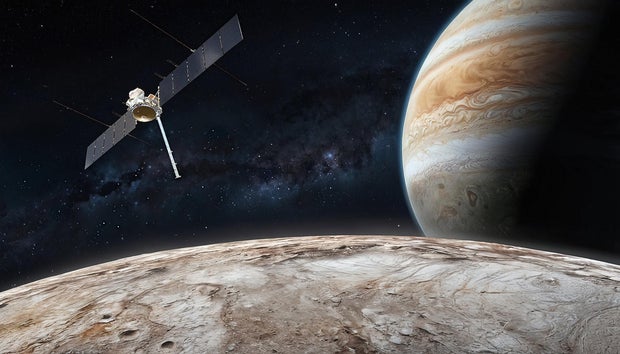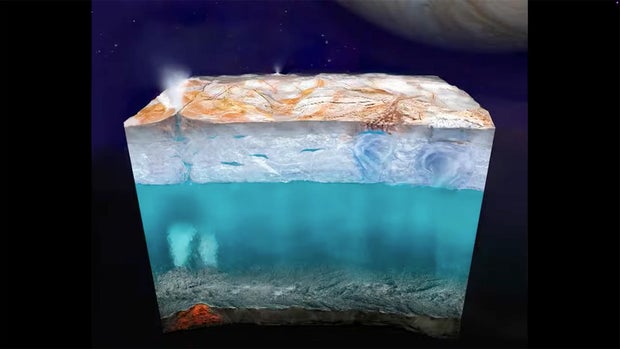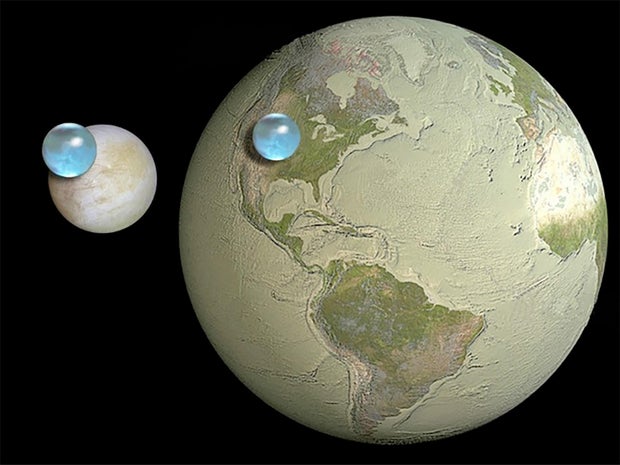CBS News
Answers sought after Catholic-run program sent children of unwed moms to U.S. | 60 Minutes

In the 1950s American Catholics were eager to adopt thousands of Italian children from an impoverished country. They thought they were saving orphans. They were wrong.
Most of the children were not orphans. They were the children of unwed mothers who had been pressured into giving up their child by their families and a powerful church. Today, thousands of American adoptees are still struggling to piece together their lost lives, decades after the Vatican’s orphan program ended in 1970.
Adoptee John Campitelli felt his entire life was based on a lie once he learned what had happened to him and his birth mother, Francesca. Campitelli is still angry at the church.
“They told her that they would take care of me and that was a lie. They didn’t take care of me,” he said. “They cut all relationships that I could possibly have with my birth family and they shipped me overseas.”
The Vatican’s post-WWII orphan program
At the end of World War II, Italy was a shattered country. Hundreds of thousands of children were abandoned in institutions run by the Catholic Church. Alarmed by the growing number of children, the Vatican decided to send children to America for adoption and the promise of a better life.
Between 1950 and 1970, the Church sent thousands of children born out of wedlock to America on orphan visas. The Church arranged the visas, helped by a 1950 U.S. law that broadened the definition of orphan to include a child with one living parent, but a parent who couldn’t provide care.
New York author Maria Laurino uncovered the Vatican’s orphan program in her new book, out Oct. 15, “The Price of Children.” Laurino pieced the story together from hundreds of documents in the Church’s New York archives. Laurino told 60 Minutes the linchpin of the program was a consent form that birth mothers were supposed to sign that severed all rights to the child. But Laurino said often doctors or lawyers signed the consent form without telling the mothers. Others were deliberately misled.
60 Minutes
“There were women who were trapped into this situation and tremendous pressure to relinquish their children,” Laurino said. “There were women who were tricked, who signed forms they didn’t understand. And, in the worst cases, there were women who were told their child had died.”
What records from the time show
For Francesca, Campitelli’s mother, and thousands like her, it was devastating to learn that the child she’d entrusted to the Church had disappeared. She was unmarried and had been forced by her family to give up her son. He was sent to a Catholic-run institution for the children of unwed mothers. When Francesca handed over her baby to the nuns, her name was stripped from the birth record. Her baby son became an orphan. Campitelli showed 60 Minutes the Church documents that changed his life:
“It says here, ‘they abandoned since birth and their whereabouts are unknown,'” Campitelli said. “They knew damn well where my mom was.”
His birth mother, he said, thought she could get her son back once she got her life together. He told 60 Minutes she never consented to an adoption, or for her son to be sent to the United States.
Laurino found letters from other distraught mothers pleading for their child’s return. She read from one letter, addressed to Monsignor Andrew Landi, an American priest living in Rome who ran the orphan program.
“I beg that my children be repatriated,” the mother wrote, “If I cannot again see my children, I will shorten my life.”
Laurino also found correspondence that showed Landi sent local priests to scour Italy’s countryside for more children to be sent to America. The Church charged $475 per child – what would now be around $4,500.
Reuniting with his birth mother
The Vatican’s orphan program ended in 1970, but the fallout continues, rippling across generations. Campitelli said the Church caused great suffering for him and for his mother.
He was 28 when he was reunited with his mother. He spent more than a decade trying to find her. It was a daunting search, with few clues. Even his surname was false, invented by the state to cut all ties between the baby and his birth mother.
Campitelli and his mother first spoke by phone in 1991.
“It brought me to tears, I must admit,” he said. “We said we were never going to let go of each other from then on.”
Two months later, he was on a flight to Italy.
“We had exchanged photographs, but I said I didn’t need a photograph because I saw that lady there in front of me and I said, ‘That’s my mom, she looks identical to me,'” Campitelli said. “And after 28 years I could say that, you know. I just ran over to her, and I embraced her. And I said, ‘Mom, finally,’ and I kissed her. I said ‘Mom, no one had to tell me who you were. I knew who you were. I just had to look at you.'”
He moved back to Italy to be closer to his birth family.
“Am I angry at the Church?”
Mary Relotto, another adoptee impacted by the program, reunited with her birth mother, Anna Maria, in 1992, but it took Relotto years to feel ready to ask why she was given away.
“She didn’t have clothes for us,” Relotto said. “She was in a desperate situation, you know? So, instead of the Church helping her…maintain a house and feed her children, they took her children.”
Anna Maria agreed to share her story if her last name was withheld because, even decades later, the stigma of having a child out of wedlock remains. She told 60 Minutes about her son Christian — Relotto’s brother — who was sent to a church-run institution when she became ill. But when she went back to pick up her baby, she says the nuns told her he had died.
60 Minutes
“I went into a depression,” Anna Maria said in Italian.
She told 60 Minutes she searched for him everywhere, wondering how he had died and whether he was buried. No one could give her any answers.
To this day, the Church insists the program was the best chance for a new life for these children. Laurino said she believes that Landi “turned a blind eye” to the plight of the birth mothers, and focused on the merits of the program. He died in 1999 without ever expressing any regrets.
“[He thought ] that they were bringing children to good Catholic homes, and that these children would be raised well in the United States,” said Laurino.
For her part, Relotto says she should never have been sent to America.
“Am I angry at the Church? Hell, yeah, I am,” she said. “I would have a different life, too. And while it might have been difficult, I still would’ve survived it without this kind of grief that I have inside of me now.”
CBS News
10/13: CBS Weekend News – CBS News

Watch CBS News
Be the first to know
Get browser notifications for breaking news, live events, and exclusive reporting.
CBS News
$5.2 billion NASA probe to assess habitability of sub-surface ocean on moon of Jupiter

One day after launching a Starship rocket on a dramatic test flight in Texas, SpaceX readied a Falcon Heavy rocket for launch Monday from Florida to send a $5.2 billion NASA probe on a 1.8-billion-mile voyage to Jupiter to find out if one of its moons hosts a habitable sub-surface ocean.
If all goes well, the Europa Clipper will brake into orbit around Jupiter in April 2030, setting up 49 close flybys of the frigid moon Europa, an ice covered world with an interior warmed by the relentless squeezing of Jupiter’s gravity as it swings around the giant planet in a slightly elliptical orbit.
NASA
Data from previous missions and long-range studies from Earth indicate a vast salt-water ocean lurks beneath the moon’s frozen crust, providing a possibly habitable environment. Whether microbial life exists in that ocean is unknown, but the Europa Clipper’s instruments will try to find out if it’s at least possible.
“Europa is an ice covered moon of Jupiter, about the size of Earth’s moon, but believed to have a global subsurface ocean that contains more than twice the water of all of Earth’s oceans combined,” said Project Scientist Robert Pappalardo.
“We want to determine whether Europa has the potential to support simple life in the deep ocean, beneath its icy layer,” he said. “We want to understand whether Europa has the key ingredients to support life in its ocean, the right chemical elements and an energy source for life.”
NASA originally planned to launch the Clipper last week, but mission managers ordered a delay to avoid Hurricane Milton, which swept across Cape Canaveral on Thursday. An additional one-day slip was ordered to resolve a technical issue and while details were not provided, the rocket was cleared for launch.
Liftoff from historic pad 39A at the Kennedy Space Center was targeted for 12:06 p.m. EDT Monday. Generating more than 5 million pounds of thrust, the triple-core Falcon Heavy, the most powerful operational rocket in the SpaceX inventory, will boost the 12,800-pound Europa Clipper to the velocity needed to break free of Earth’s gravity.
While SpaceX normally recovers first stage boosters for refurbishment and reuse, all three core boosters and the rocket’s second stage will use all of their propellants to accelerate the Clipper to the required Earth-departure velocity. As such, no first stage recoveries are possible.
“Falcon Heavy is giving Europa Clipper its all, sending the spacecraft to the farthest destination we’ve ever sent, which means the mission requires the maximum performance. So we won’t be recovering the boosters,” said Julianna Scheiman, SpaceX director of NASA science missions.
“I don’t know about you guys, but I can’t think of a better mission to sacrifice boosters for where we might have an opportunity to discover life in our own solar system.”
To get to Jupiter, the Clipper will first fly past Mars on March 1, using the red planet’s gravity to boost its speed and bend the trajectory to send the probe back toward Earth for another gravity-assist flyby in December 2026. That will finally put the Clipper on course for Jupiter.
NASA
If all goes well, the probe will brake into orbit around Jupiter on April 11, 2030, using the gravity of the moon Ganymede to slow down before a six- to seven-hour firing of the probe’s thrusters. The first of 49 planned flybys of Europa, some as low as 16 miles above the surface, will begin in early 2031.
The mission is expected to last at least three years with the possibility of an extension depending on the spacecraft’s health.
In either case, the Clipper will end its voyage with a kamikaze descent to Jupiter’s moon Ganymede to prevent any chance of a future uncontrolled crash on Europa that might bring earthly microbes to the moon and its possibly habitable sub-surface environment.
“The spacecraft faces some big challenges,” Pappalardo said. “The distance of Jupiter is five times farther from the sun than the Earth is. That means it’s very cold out there, and there’s only faint sunlight to power the solar arrays. So they’re huge.”
Once deployed, the 13.5-foot-wide solar arrays will stretch more than 100 feet from end to end — more than the length of a basketball court — with two radar antennas extending 58 feet from each array.
Power requirements aside, Jupiter’s powerful magnetic field “acts like a giant particle accelerator at Europa,” he said. “A human would receive a lethal dose of radiation in just a few minutes to a few hours, if exposed to that environment.”
The Clipper was designed to withstand repeated doses of extreme radiation while making close flybys of Europa, housing its flight computer and other especially sensitive gear inside a vault shielded by sheets of aluminum-zinc alloy.
But engineers were dismayed to discover earlier this year that critical electrical components used throughout the spacecraft failed at lower levels of radiation than expected.
Engineers and managers held a major review to determine how that might affect the Clipper and eventually concluded the spacecraft could minimize radiation-induced degradation by slightly changing the way the flybys are executed. The only alternative was to delay the launch for several years to replace the suspect components.
Mission scientists were eager to finally get the long-awaited mission underway.
“What would be the greatest outcome? To me, it would be to find some sort of oasis, if you like, on Europa where there’s evidence of liquid water not far below the surface, evidence of organics on the surface,” Pappalardo said. “In the future, maybe NASA could send a lander to scoop down below the surface and literally search for signs of life.”
NASA
As for what sort of life might be possible below the moon’s frozen surface, “we’re really talking simple, like single-celled organisms,” he said. “We don’t expect a lot of energy for life in Europa’s ocean like we do here on the surface of Earth.
“So we don’t expect fishes and whales and that kind of thing,” he added. “But we’re interested in could Europa support simple life, single-celled organisms?”
The Clipper is equipped with nine state-of-the-art instruments, including narrow- and wide-angle visible light cameras that will map about 90% of Europa’s surface, imaging details down to the size of a car. An infrared camera that will look for warmer regions where water may be closer to the surface or even spewing into space.
“The cameras will observe over 90% of Europa’s surface at a resolution of less than 100 meters to a pixel, or 325 feet,” said Cynthia Phillips, a project staff scientist at the Jet Propulsion Laboratory. “That’s about the size of a city block.
“The narrow-angle camera will be able to take pictures at a resolution as high as half a meter per pixel. That’s about 1.6 feet. And so it will be able to see car-sized objects on the surface of Europa.”
Two spectrometers will study surface chemistry and the composition of the moon’s ultra-thin atmosphere, on the lookout for signs of water plumes and other ocean-driven features. Two magnetometers will probe the sub-surface ocean by studying electrical currents induced by Jupiter’s magnetic field.
An ice-penetrating radar will “see” up to 19 miles beneath the icy crust to look for pockets of water in the ice and helping scientists understand how the ice and water interact with the presumed ocean.
“Those signals will penetrate through into the subsurface, where they may be able to bounce off a liquid water layer, such as a lake within the icy shell, or maybe even penetrate all the way through, depending on how thick the surface ice layer is and other factors, such as its structure and composition,” Phillips said.
“The radar could be able to penetrate as deep as 30 kilometers. That’s about 19 miles below the surface.”
Two other instruments will study gas and dust particles on the surface and suspended in the atmosphere to analyze their chemical makeup. Finally, scientists will measure tiny changes in the probe’s trajectory, allowing them to glean details about Europa’s internal structure.
“We know of our Earth as an ocean world, but Europa is representative of a new class of ocean worlds, icy worlds in the distant outer solar system where saltwater oceans might exist under their icy surfaces,” Pappalardo said. “In fact, icy ocean worlds could be the most common habitat for life, not just in our solar system, but throughout the universe.
“Europa Clipper will, for the first time, explore such a world in depth. … We’re at the threshold of a new era of exploration. We’ve been working on this mission for so long. We’re going to learn how common or rare habitable icy worlds may be.”
CBS News
10/13/2024: Pennsylvania Counts; The Vatican’s Orphans; Ballmer’s Ballgame

Watch CBS News
Be the first to know
Get browser notifications for breaking news, live events, and exclusive reporting.








